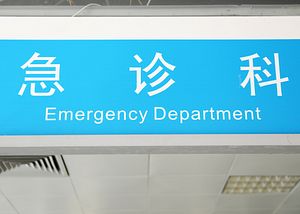China’s State Council recently announced that commercial health insurance would be enhanced to meet demand for improved healthcare services. Reform in this area is much needed, as dramatic shortfalls in some areas remain. Inequality in health care provided is a persistent problem between urban and rural areas, richer and poorer provinces, and east and west.
Health insurance programs through the Urban Employee Basic Medical Insurance Program (UEBMI), the Urban Resident Basic Medical Insurance Program (URBMI), the New Cooperative Rural Medical Scheme (NCMS), and the urban and rural medical assistance program provide access to health care for select groups of Chinese citizens. While in name China has achieved universal health coverage in recent years, benefits remain low and quality and extent of care and coverage vary widely. Copays are often very high, certain drugs are excluded from coverage, and out of pocket expenses are insufficiently reimbursed. The out-of-pocket cost issue is the most pressing, especially in rural areas.
Provincial contributions to the URBMI scheme and county contributions to the NCMS scheme vary, while contributions to the UEBMI are somewhat more stable since they are based on employment and fixed at 8 percent of the payroll. Together, the URBMI and NCMS schemes account for the vast majority of the population. Differences in contributions, particularly outside of the urban employee medical insurance scheme, have given rise to large differences in health insurance coverage. Variations in benefits packages also contributes to this disparity.
Compounding these differences, health care staff in rural areas are often far less qualified than those in urban areas. Some community health centers face a problem of poor management. Services provided to insured patients may be less cost effective to allow providers to charge more to these patients. A study performed by Kai Liu, Qiaobing Wu, and Junqiang Liu (2014) even found that patients insured by NCMS paid on average 1921 RMB more in out of pocket expenses than the uninsured. Hong Liu and Zhong Zhao (2014) found that coverage by URBMI had no impact on out of pocket expenses.
China’s leadership is aware of the shortcomings of the health care system. They are attempting to address the issues of underpaid doctors, since this has created a dependency on supplementary income from prescribing costly drugs and medical procedures. China also plans to increase the reimbursement rate for services related to critical illness. However, this reform is a tall order. While the State Council has pledged to increase the healthcare service sector to 8 trillion RMB ($1.3 trillion) by 2020, the population continues to age and place increasing strain on this industry. Public hospitals face poor governance structures, and the Ministry of Health, which is charged with governing the health care system as a whole, has little ability to fully control the delivery of health care services as other ministries place their own demands on the health care sector.
The health care issue has not been sufficiently addressed by the private sector, which is greatly underdeveloped. Less than half of the population is covered by private health insurance (30 percent of urban users) and private insurance products are confusing and may include high brokerage commissions. The largest private health insurance companies include Ping An Insurance Group, PICC Health Insurance, Kunlun Health Insurance, and Hexie Health. Private healthcare facilities are insufficient; for example, only 12 percent of hospital beds are private.
While one cannot expect China to develop an efficient and effective health care regime overnight, some fundamental issues in the existing health insurance scheme and health care provider network need to be addressed first. Understanding why the current health insurance scheme does not provide proper reimbursement for out-of-pocket payments, especially in the URBMI and NCMS plans, is essential. Although some reports state that the reimbursement rate is around 70 percent for both of these programs, a follow up on the studies mentioned above needs to be conducted in order to find out why out of pocket expenses continue to be so high under these plans. The issue of doctor’s pay is also important, as is the excessive burden placed on hospitals in care provision. The government is encouraging the growth of private hospitals to reduce pressure on public hospitals, but this may take time. Moreover, reimbursement of public health insurance holders in private hospitals has only recently become policy, and it is not clear whether the impact of utilizing a private hospital will be as beneficial for public insurance holders. Better training for health care staff is pressing, particularly for rural areas.
No doubt, developing China’s health care system is a great challenge. Changing the fundamental structure of the system to place less stress on public hospitals, streamlining public health insurance while improving the funding scheme, and ensuring that patients are properly reimbursed are all absolutely necessary. This is likely more than can be reformed at the moment.

































